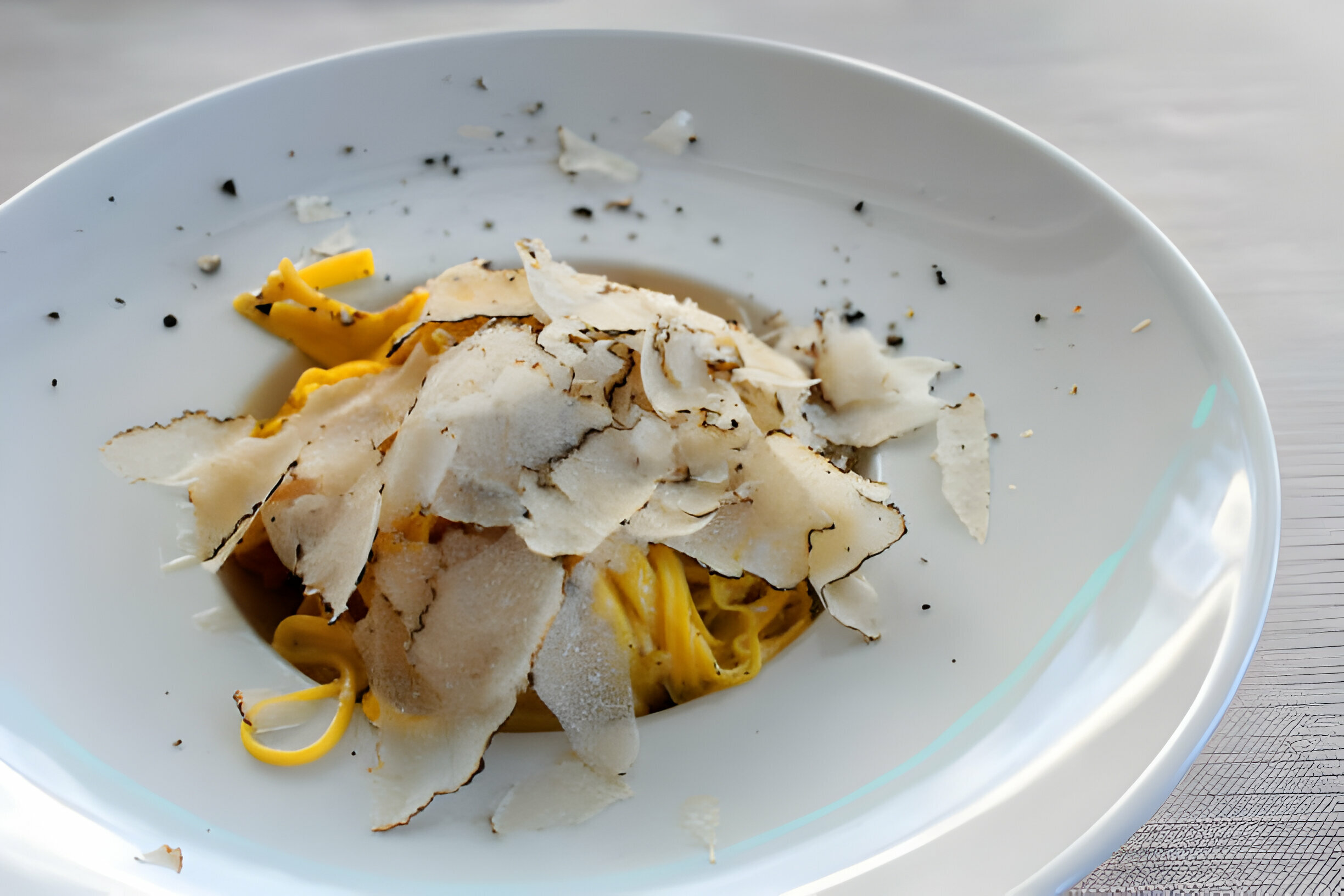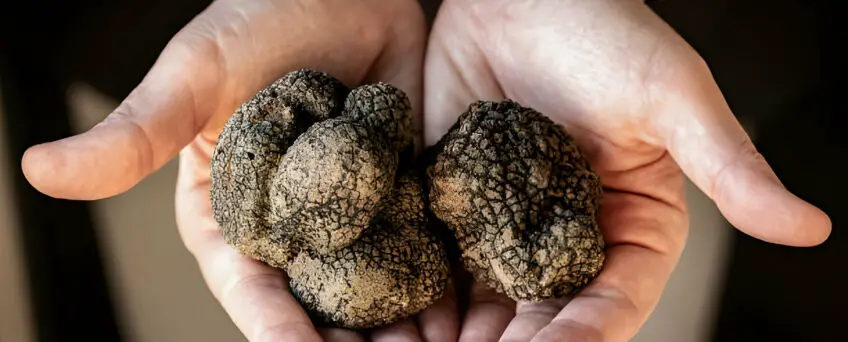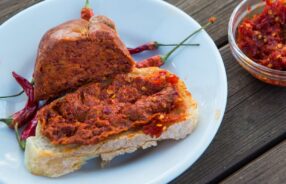Importance of Truffles in Italian Cuisine
The truffle so loved and renowned by the Italians, is a mushroom that grows underground, where it lives in symbiosis with the roots of some plants, such as oaks and holm oaks.
There are many species of truffle, which can vary according to the area in which they grow, the type of soil, and the plants with which they enter into symbiosis.
In the gastronomic field, the best truffle varieties are, in order of importance and value, the prized white truffle, the prized black truffle, and the black summer truffle commonly known as scorzone.
The external appearance that identifies the various types is not only characterized by the difference in color, but also by the different shapes and the type of “skin”.
The shape of the truffle depends on the type of soil in which it grows. Soft soil favors the formation of spherical truffles. Harder and stony soil favors the formation of lumpy truffles.
The external part of the truffle is not really a peel or even a bark, it is more precisely the peridium, which covers the internal part, called gleba. This in turn can also vary in color according to the type of truffle and take on shades ranging from greyish-black, reddish, or purplish to brown. The gleba is also covered by whitish streaks, which, depending on the different types of truffles, can be more or less large and marked.
The truffle is extremely sought after and prized and consequently, very expensive. Also, because it is a completely natural product, it is found almost exclusively in the spontaneous state. Truffle farms do exist, but they don’t work for all varieties, so there is no guarantee of success there.
There are so many factors that determine the growth of truffles, so it is very difficult to reproduce and maintain them to ensure the success of cultivation. Therefore, we rely on nature and, for each variety and in each area of Italy, the hunt for truffles is strictly regulated by law and must absolutely respect the right maturation times of each type. This is both out of respect for nature and also because it is absolutely useless to collect truffles before they have reached full maturity. If a truffle isn’t mature, it is completely devoid of aromas.
Being such a valuable and in some cases expensive food, it is usually used sparingly. However, its taste is so intense and unmistakable that the quantities needed to perfume the dishes and to be appreciated are very minimal.
Are truffles eaten raw or cooked?
There is an unwritten but sacred rule for those who love truffles: the highly prized white truffle is eaten only and exclusively raw, and the black one can also be very lightly cooked.
The white truffle can be sliced very thinly with the special truffle slicer and placed on the already cooked dish, where the heat will serve to better release its aromas without deteriorating them.
The black truffle, on the other hand, can face cooking, provided it is very short and non-violent. This is testified by the number of recipes in which the black truffle is present in the fillings or in the condiments of many first courses, in flans and pates. Obviously, even the black truffle is excellent eaten raw, perhaps grated on dishes in which it is already cooked, to give more character to the dish, because even black truffles still give their best raw.

There is one general rule for creating successful combinations with truffles. Since its aroma and taste are already of a certain importance, it would be good to combine truffles with dishes that are not particularly elaborate. It is better to go for simple dishes, with few ingredients, so as not to create a “taste confusion”. For example you can try Pasta alla Norcina.
As in the famous case of the fried egg with white truffle: an elementary dish made up of a single ingredient, which accompanies the king of truffles, it the way it can be savored at its best, without taste interference.






